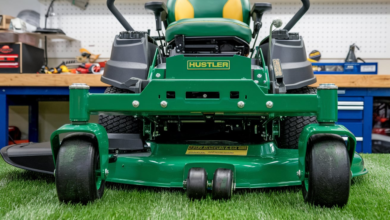The Hidden Costs of Vacuum Cleaners: More Than Just Suction Power

When people purchase vacuum cleaners, they often focus on suction power as the primary measure of effectiveness. However, there are hidden costs associated with vacuum cleaners that many overlook.
These costs go beyond the initial price tag and can add up over time, affecting both your wallet and the environment. In this article, we’ll explore some of these hidden costs and why it’s essential to consider them when choosing a vacuum cleaner for your home.
Energy Consumption: A Growing Concern
One of the most significant hidden costs of vacuum cleaners is energy consumption. Traditional vacuums can use a lot of electricity, especially if they are used frequently. Over time, this can lead to higher energy bills, which adds up considerably in households where cleaning is done regularly. When purchasing a vacuum cleaner, it’s essential to consider energy efficiency, as this will directly impact your monthly expenses.
Energy-efficient vacuum models are now available that consume less power without sacrificing performance. These models may have a higher upfront cost, but their long-term savings on electricity can make them more economical in the long run. It’s also worth considering alternatives like a robot vacuum, which tends to be more energy-efficient due to their smaller motors and smart cleaning technologies.
Maintenance and Repair Costs
Another hidden cost of vacuum cleaners is maintenance. Regular upkeep, such as replacing filters, cleaning brushes, and fixing worn-out parts, can become expensive over time. Many vacuums require specific filters or bags, which are often sold at a premium.
Additionally, repair costs can be steep if something goes wrong with the motor or other essential components. Frequent breakdowns or malfunctions can also lead to the need for early replacement, further increasing the overall cost.
Robot vacuums, in particular, offer some relief in this area. These devices often come with self-cleaning or low-maintenance features, reducing the frequency of manual interventions.
However, they, too, may require occasional maintenance, such as sensor cleaning or battery replacements. Regardless of the type of vacuum cleaner, it’s crucial to factor in these ongoing costs when evaluating the true cost of ownership.
Time and Convenience: A Cost We Often Overlook
Time is money, and traditional vacuum cleaners can be time-consuming to operate. Depending on the size of your home and the amount of dirt and dust, vacuuming can take anywhere from 30 minutes to over an hour. For individuals with busy schedules, this is a significant investment of time that could be spent on other important activities.
A robot vacuum can alleviate this burden by automating the cleaning process. It operates independently, freeing up your time for other tasks.
Although the initial investment may be higher, the time saved can be invaluable, particularly in larger homes. Moreover, these devices are often equipped with smart technology that allows them to clean more efficiently, further reducing the time needed to maintain a clean home.
Environmental Impact: The Long-Term Costs
In addition to financial costs, vacuum cleaners can also have an environmental impact. Many traditional vacuums use disposable bags and filters, which contribute to landfill waste. Furthermore, inefficient energy usage increases the carbon footprint of households. Over time, these hidden environmental costs can be significant.
Switching to more eco-friendly models or a robot vacuum can reduce this impact. Many modern vacuums are designed with sustainability in mind, using reusable or recyclable components and energy-efficient motors. Although these eco-friendly options may require a higher upfront investment, their long-term benefits to both your finances and the environment make them worth considering.
Final Thoughts: More Than Meets the Eye
When purchasing a vacuum cleaner, it’s easy to be swayed by factors like suction power and price. However, it’s crucial to consider the hidden costs that may not be immediately obvious. From energy consumption and maintenance to time savings and environmental impact, there are many factors that contribute to the true cost of owning a vacuum cleaner.
Making an informed decision requires looking beyond the initial purchase price. By considering all aspects of vacuum ownership, including more sustainable options like a robot vacuum, you can choose a vacuum that suits not only your cleaning needs but also your long-term financial and environmental goals.




